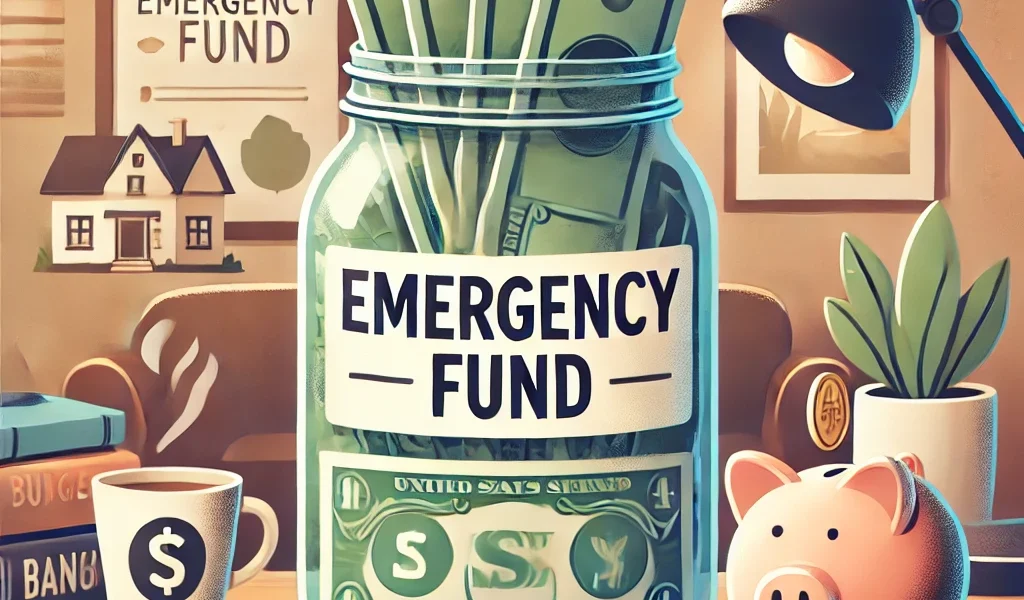Having an emergency fund is one of the most critical aspects of financial planning. It acts as a financial safety net, protecting you from unexpected expenses such as medical emergencies, job loss, or urgent home repairs. However, many people hesitate to build an emergency fund, fearing that it might compromise their current lifestyle. The good news is that you can grow your savings without giving up the things you love.
This guide will walk you through practical and effective strategies to build an emergency fund while maintaining your lifestyle.
Why an Emergency Fund is Essential
An emergency fund provides financial stability and peace of mind by covering unforeseen expenses. Here’s why it is crucial:
- Avoids Debt: Helps you cover emergencies without relying on credit cards or loans.
- Financial Security: Reduces stress and gives confidence in handling unexpected situations.
- Protects Other Investments: Prevents you from withdrawing from long-term savings or retirement funds prematurely.
Now, let’s dive into how you can build an emergency fund without sacrificing your lifestyle.
Step 1: Set a Realistic Savings Goal
The first step in building an emergency fund is determining how much you need. Financial experts typically recommend saving three to six months’ worth of living expenses. However, if that seems overwhelming, start with a smaller, achievable goal.
How to Calculate Your Emergency Fund Amount:
- List your essential monthly expenses, including rent, utilities, groceries, insurance, and debt payments.
- Multiply the total by three to six months, depending on your comfort level and job stability.
- Set an initial goal (e.g., $1,000) and gradually work toward the full amount.
Step 2: Automate Your Savings
One of the easiest ways to save without affecting your lifestyle is automating your savings. This ensures that a portion of your income is directed toward your emergency fund before you even have a chance to spend it.
How to Automate Savings:
- Set up automatic transfers from your checking account to a dedicated emergency fund.
- Use savings apps like Digit, Acorns, or Qapital to round up spare change and save effortlessly.
- Take advantage of employer direct deposits by allocating a percentage of your paycheck to savings.
By automating your savings, you remove the temptation to spend extra money and make consistent progress toward your goal.
Step 3: Reduce Unnecessary Expenses Without Feeling Deprived
You don’t have to cut out everything you enjoy to save money. Instead, focus on small, painless adjustments that free up extra cash without making you feel restricted.
Easy Ways to Cut Costs:
- Cancel unused subscriptions: Review your streaming, gym, and app subscriptions and eliminate those you rarely use.
- Dine out strategically: Instead of cutting out restaurants altogether, limit eating out to special occasions or opt for lunch deals instead of dinner.
- Switch to generic brands: Many store-brand products are just as good as name brands but cost significantly less.
- Use cashback and rewards: Leverage cashback apps, credit card rewards, and loyalty programs to get discounts on everyday purchases.
Small changes like these can add up, allowing you to save money without drastically altering your lifestyle.
Step 4: Increase Your Income Without Overworking
If you’re worried that saving means sacrificing fun, consider boosting your income instead of cutting expenses.
Ways to Earn Extra Money:
- Freelance or side gigs: Use platforms like Fiverr, Upwork, or TaskRabbit to monetize your skills.
- Sell unused items: Declutter your home and sell items on eBay, Poshmark, or Facebook Marketplace.
- Leverage passive income: Rent out a spare room, invest in dividend stocks, or create digital products to generate extra cash.
- Negotiate a raise: If you’ve been excelling at work, request a salary increase to improve your financial position.
Even an extra $50-$100 per month can speed up your emergency fund savings without requiring major lifestyle sacrifices.
Step 5: Make Saving Fun and Rewarding
Saving doesn’t have to be boring. Turning it into a challenge or game can make the process enjoyable and engaging.
Fun Saving Strategies:
- No-Spend Challenge: Set a goal to avoid spending on non-essentials for a week or month and redirect those savings.
- Savings Jar: Physically putting money into a jar can make saving feel more tangible and rewarding.
- Round-Up Savings: Use apps that round up purchases to the nearest dollar and save the spare change.
- Reward Yourself: Set milestones and treat yourself when you reach savings goals (e.g., a movie night after saving $500).
These methods make saving feel less like a burden and more like an exciting achievement.
Step 6: Keep Your Emergency Fund Separate
A common mistake is keeping emergency savings in the same account as daily spending money. This makes it too easy to dip into the fund for non-emergencies.
Best Places to Keep Your Emergency Fund:
- High-yield savings account: Offers higher interest rates while keeping funds accessible.
- Money market account: Provides easy access with some investment benefits.
- Separate bank account: Keeping it at a different bank reduces temptation to spend it impulsively.
By storing your emergency fund separately, you ensure that the money is available only when truly needed.
Step 7: Replenish Your Fund After Using It
If you ever need to use your emergency fund, make it a priority to rebuild it as soon as possible. Treat it as a recurring expense and restart saving until you reach your goal again.
How to Replenish Your Emergency Fund:
- Pause discretionary spending temporarily until your savings are restored.
- Use bonuses, tax refunds, or windfalls to replenish your fund quickly.
- Adjust your budget to allocate a higher percentage to savings until you reach your target again.
Step 8: Stay Consistent and Make It a Habit
Building an emergency fund is not a one-time task—it requires consistency and commitment. By incorporating savings into your regular financial routine, you’ll always have a safety net without feeling financially strained.
Habits for Long-Term Success:
- Review your budget monthly to ensure steady savings progress.
- Keep increasing your fund size as your income grows.
- Stay disciplined and only use the fund for genuine emergencies.
Conclusion
Saving for emergencies doesn’t mean giving up your favorite things. By setting realistic goals, automating savings, making small spending adjustments, increasing income, and keeping your fund separate, you can build financial security without sacrificing your lifestyle.
Start implementing these strategies today, and before you know it, you’ll have a solid emergency fund that provides peace of mind and financial freedom. Your future self will thank you!




